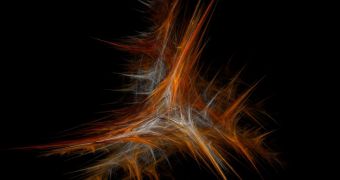Recent investigations scientists conducted into superconductors, the amazing materials governed by the laws of quantum mechanics, revealed that higher laws of nature may be inscribed within.
The idea was proposed by researchers who got a chance to look at the fractal structures that develop inside these materials, which were at first considered to be nothing but flaws.
Now, physicists are convinced that the very existence of these fractals – structures that repeat their own appearance down to the lowest level of miniaturization – is an indicator that higher, yet-undiscovered laws of nature exist in the Universe.
High-temperature superconductors are very odd materials, in which the rules of quantum dynamics are at work.
This means that electrons in electricity are able to flow freely within, without experiencing any friction, and without the overall system losing energy as heat.
In the new studies, it was revealed that oxygen atoms within these materials, which at first appeared to be ordered randomly, are actually arranged in fractal structures.
The chances of such complex and outstanding structures to appear by accident are extremely remote, the science team behind the investigation says.
One of the reasons why science ignored the oxygen atoms in superconductors was the fact that scientists did not believe the two types of structures – the atoms and the electrons in electrical energy – were connected in any way.
“We don’t know the theory for this. We just make the experimental observation that the two worlds seem to interfere,” explains Antonio Bianconi, who is a physicist at the Sapienza University, in Rome, Italy.
Details of the research are published in the August 12 issue of the esteemed scientific journal Nature.
“Such fractals are ubiquitous elsewhere in nature, [but] it comes as a complete surprise that crystal defects can accomplish this feat” in crystals, says Jan Zaanen, who is a theoretical physicist at the Leiden University.
The team behind the new study says that the fractals appear to have a function too. Apparently, they influence the temperatures at which the materials begin exhibiting superconductivity.
The discovery is bound to inform numerous new achievements in a variety of fields of research associated with using magnets and the laws of quantum mechanics, Wired reports.
Follow me on Twitter @TudorVieru

 14 DAY TRIAL //
14 DAY TRIAL //